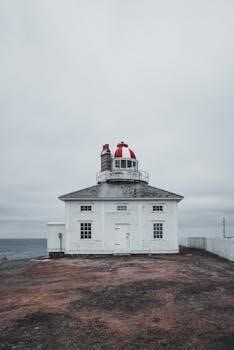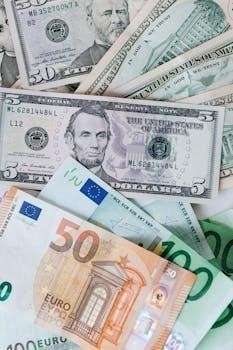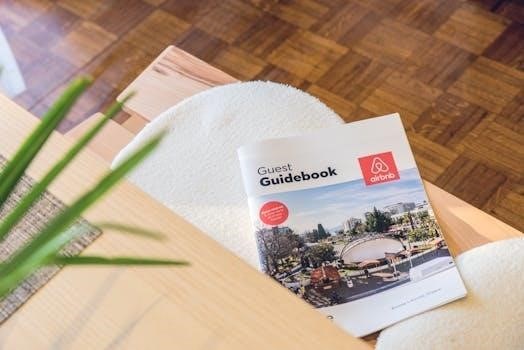wedgwood value guide

Welcome to your comprehensive guide to understanding the worth of Wedgwood pottery and china. This guide will navigate you through the history, patterns, and factors influencing value. This will allow you to identify valuable pieces, including Jasperware, Black Basalt, and Fairyland Lustre, and more.
Overview of Wedgwood’s History and Legacy
Wedgwood’s journey began in 1759, marking the start of a legacy that has shaped the world of ceramics. Founded by Josiah Wedgwood, the company quickly gained renown for its innovative techniques and high-quality craftsmanship. Josiah’s unique ability to blend artistry with industrial production allowed Wedgwood to produce exquisite pieces for a wide audience, from royalty to everyday consumers. The brand became synonymous with British elegance and craftsmanship. Wedgwood has successfully navigated over 260 years of history, becoming one of the world’s most recognized ceramic producers. This enduring legacy reflects its commitment to excellence.
Josiah Wedgwood’s innovative spirit led to the creation of distinctive materials like Jasperware and Black Basalt. The company’s commitment to both classic designs and contemporary styles has ensured its continuous relevance. Wedgwood’s influence extends beyond its products. It also encompasses the development of industrial practices within ceramics. The company’s history includes periods of rapid expansion, challenges, and adaptations that have all contributed to its legendary status. Today, Wedgwood remains a symbol of British design and a cornerstone in the world of fine ceramics, attracting collectors and admirers worldwide.
Factors Influencing Wedgwood Value
Several key factors determine the value of Wedgwood pieces, making it essential for collectors and enthusiasts to understand these nuances. The age of a piece is a significant determinant, with older items, particularly those from the 18th and 19th centuries, often commanding higher prices due to their historical significance and rarity. The pattern and style of a Wedgwood item also play a crucial role. Certain patterns, such as Fairyland Lustre, are highly sought after due to their limited production and intricate designs. The condition of a piece is another critical factor; items in excellent condition with no chips, cracks, or repairs are valued more highly;
Rarity significantly impacts value. Pieces produced in limited quantities or those that are rarely found in the market tend to be more valuable. The color of a Wedgwood item can also affect its worth; for instance, red Jasperware is considered exceptionally rare and desirable. Furthermore, the presence of specific markings, including date codes and manufacturer’s marks, can help authenticate a piece and thus influence its value. Finally, market trends and collector demand also play a role in determining the final price of Wedgwood items, as popularity fluctuates.

Key Wedgwood Patterns and Styles
Wedgwood boasts a diverse range of patterns and styles, each with unique characteristics. These include the iconic Jasperware, the distinctive Black Basalt, popular Queens Ware, and the rare Fairyland Lustre, which are sought after by collectors.
Jasperware⁚ Characteristics and Value
Jasperware, a hallmark of Wedgwood, is renowned for its unglazed stoneware body and distinctive matte finish. It’s characterized by applied classical motifs, often in white relief on a colored background, most famously a pale blue. However, other colors, including lilac, green, and black, are also found, with red being particularly rare and highly valued due to its limited production period in the late 19th and early 20th centuries. The value of Jasperware pieces is influenced by several factors. These include the color, with rarer colors commanding higher prices. The complexity and condition of the applied relief work also play significant roles. Early pieces, particularly those from the 18th and 19th centuries, are generally more valuable than later productions. Additionally, the size and rarity of the form of Jasperware contribute to its worth; large, unique shapes are highly sought after by collectors. Identifying genuine Jasperware involves examining the piece for specific Wedgwood markings and dating codes, which can provide clues about its age and authenticity. The condition of the piece is also crucial; pieces free of damage or restoration hold greater value.
Black Basalt⁚ Identifying Valuable Pieces
Black Basalt, a fine-grained, unglazed stoneware, is another significant creation of Wedgwood, known for its sleek, black finish and classical forms. Identifying valuable Black Basalt pieces involves carefully examining their characteristics. Early pieces, particularly those from the 18th and early 19th centuries, command higher prices due to their historical significance and craftsmanship. The quality of the modeling and the sharpness of detail are crucial indicators of value. Look for crisp, well-defined lines and forms, especially in relief work or applied decorations. The presence of impressed Wedgwood marks, often incorporating the word “Wedgwood” along with other symbols or numerals, is essential for authentication and dating. These markings can help determine the age and production period of the piece. The condition of the Black Basalt is paramount; pieces without chips, cracks, or repairs are more valuable. Pay attention to the surface; wear or fading can diminish the value. Rarity also plays a role; unusual shapes or pieces with unique decorations are highly sought after by collectors. Therefore, meticulous examination, combined with knowledge of Wedgwood’s history, is essential when assessing Black Basalt pieces.
Queens Ware⁚ Popularity and Pricing
Queens Ware, a cream-colored earthenware developed by Josiah Wedgwood, holds a special place in the history of ceramics. Its popularity stems from its versatility, durability, and the elegance of its simple forms. The pricing of Queens Ware pieces is influenced by several factors. Early examples, especially those from the 18th century, often command higher prices due to their age and historical importance. Pieces with unique or elaborate decorations, such as hand-painted designs or transfer prints, can be more valuable than plain pieces. The condition of the ware is a critical factor; pieces that are free from cracks, chips, and repairs generally have higher values. The presence of Wedgwood markings, including impressed marks and date codes, is crucial for authentication and dating the piece. These marks can help to differentiate between early original pieces and later reproductions. Also, the pattern and the rarity of the shape are important. Some shapes, like teapots or specific serving dishes, are more sought after than others. Collectors are also keen on complete sets, which tend to fetch higher prices than individual items. Therefore, to determine the market price of Queens Ware, one must examine these factors carefully.
Fairyland Lustre⁚ Rarity and Market Value
Fairyland Lustre, created by Daisy Makeig-Jones for Wedgwood, represents a highly collectible and sought-after style. Its rarity stems from its intricate designs, vibrant colors, and limited production period, mainly during the 1910s and 1920s. The market value of Fairyland Lustre is generally quite high, reflecting its desirability among collectors. Pieces with intricate scenes, featuring fantastical creatures and landscapes, typically command the highest prices. The complexity of the design and the vibrancy of the colors are key factors. Condition is critical; pieces in excellent condition, with minimal wear or damage, are more valuable. Originality is also a consideration; pieces that retain their original luster and have not been repainted or repaired are more desirable. The presence of the Wedgwood mark and the specific pattern number helps to authenticate the piece and determine its production date. Some Fairyland Lustre patterns are more scarce than others, which can also impact value. The size of the item is another factor, with larger, more elaborate pieces usually commanding higher prices. For example, large bowls and vases tend to be more valuable than smaller plates or dishes. Collectors are also interested in items with unusual shapes or patterns.

Determining the Value of Wedgwood
Determining the value of Wedgwood requires careful attention to detail. It involves identifying markings, assessing condition, and understanding rarity. These factors are crucial for accurate valuation, and for potential collectors and sellers of Wedgwood.
Identifying Wedgwood Markings and Dates
Identifying Wedgwood markings is crucial for determining the age and authenticity of a piece. Wedgwood used various marks throughout its history, and understanding these marks is essential for collectors. Early pieces often feature impressed marks, while later items may have printed or stamped marks. These marks can include the “Wedgwood” name, various symbols, and sometimes date codes. A chronological list of marks and cyphers is beneficial for dating. It is important to be vigilant, as there are many reproductions that are not authentic. Our experts can help with authenticating markings. Some pieces may even have specific shape numbers, which can further help with identification. A guide to Wedgwood pottery markings is an invaluable resource for this task. Dated pieces can be especially valuable, such as a large lidded vase from 1968 which achieved a hammer price of £1,900 in 2023. By understanding these markings, you can gain invaluable insights into the history and value of your Wedgwood items. This knowledge is key to both collecting and selling Wedgwood pieces.
Assessing Condition and Rarity
The condition and rarity of a Wedgwood piece significantly impact its value. A piece in pristine condition, without chips, cracks, or repairs, will command a higher price. Any damage, even minor, can substantially reduce value. Rarity is another crucial factor; some patterns, colors, and shapes were produced in limited quantities, making them highly sought after. Red Jasperware, for example, is considered very rare due to its short production period in the late 19th and early 20th centuries. Pieces from early production periods are often more valuable, and those with unique historical significance will also be more desirable. The combination of excellent condition and high rarity creates the most valuable Wedgwood items. Some colours are more desirable than others with red being considered the most darling and rarest. When assessing condition, look closely for any signs of wear, crazing, or fading. It’s also important to consider if a piece is part of a set and if the set is complete, as this can also influence its value. The rarer and the better the condition the higher the value.

Where to Find Wedgwood Value Information
Discovering the true value of your Wedgwood pieces requires accessing reliable resources. This section will guide you to online price guides, auction results, and the expertise of professional appraisers and experienced collectors, assisting you in understanding the current market.
Online Price Guides and Auction Results
Exploring online price guides and auction results is a valuable step in determining the worth of your Wedgwood items. These resources offer a broad view of the market, showcasing recent sales data and trends. Websites specializing in antiques and collectibles often maintain databases of past auction outcomes, providing a benchmark for assessing value. By searching for specific Wedgwood patterns or styles, such as Jasperware or Fairyland Lustre, you can find comparable pieces and their achieved prices. Remember to consider the condition and rarity of the items being compared, as these factors greatly impact worth. Auction sites are another great resource. You can often find upcoming auctions, as well as past sale results to give you a view of the market. However, while these digital resources offer valuable insights, they should be used in conjunction with other methods, such as consulting professional appraisers for a more nuanced valuation. These online tools, when used correctly, can be a powerful way to understand the market for Wedgwood items. It’s a great way to get a feel for the current demand for various pieces and styles.
Professional Appraisers and Collectors

Seeking the expertise of professional appraisers and experienced collectors is a highly recommended step in your Wedgwood valuation journey. These individuals possess in-depth knowledge of Wedgwood’s history, patterns, and market trends that online resources can’t fully replicate. Professional appraisers can offer formal valuations for insurance or sale purposes, taking into account nuances like subtle variations in color, condition, and the rarity of specific pieces; Their trained eyes can also spot reproductions, which are common in the Wedgwood market, ensuring the authenticity of your items. Collectors, on the other hand, often have a wealth of hands-on experience and may be keenly aware of current trends and demand, providing valuable insights into a piece’s desirability. They can also offer information about the various makers marks, which can be key to determining age and authenticity. Engaging with both appraisers and collectors provides a more comprehensive understanding of your Wedgwood pieces’ true value. Remember that while online research is useful, the expertise of those in the field will provide a much more accurate valuation.